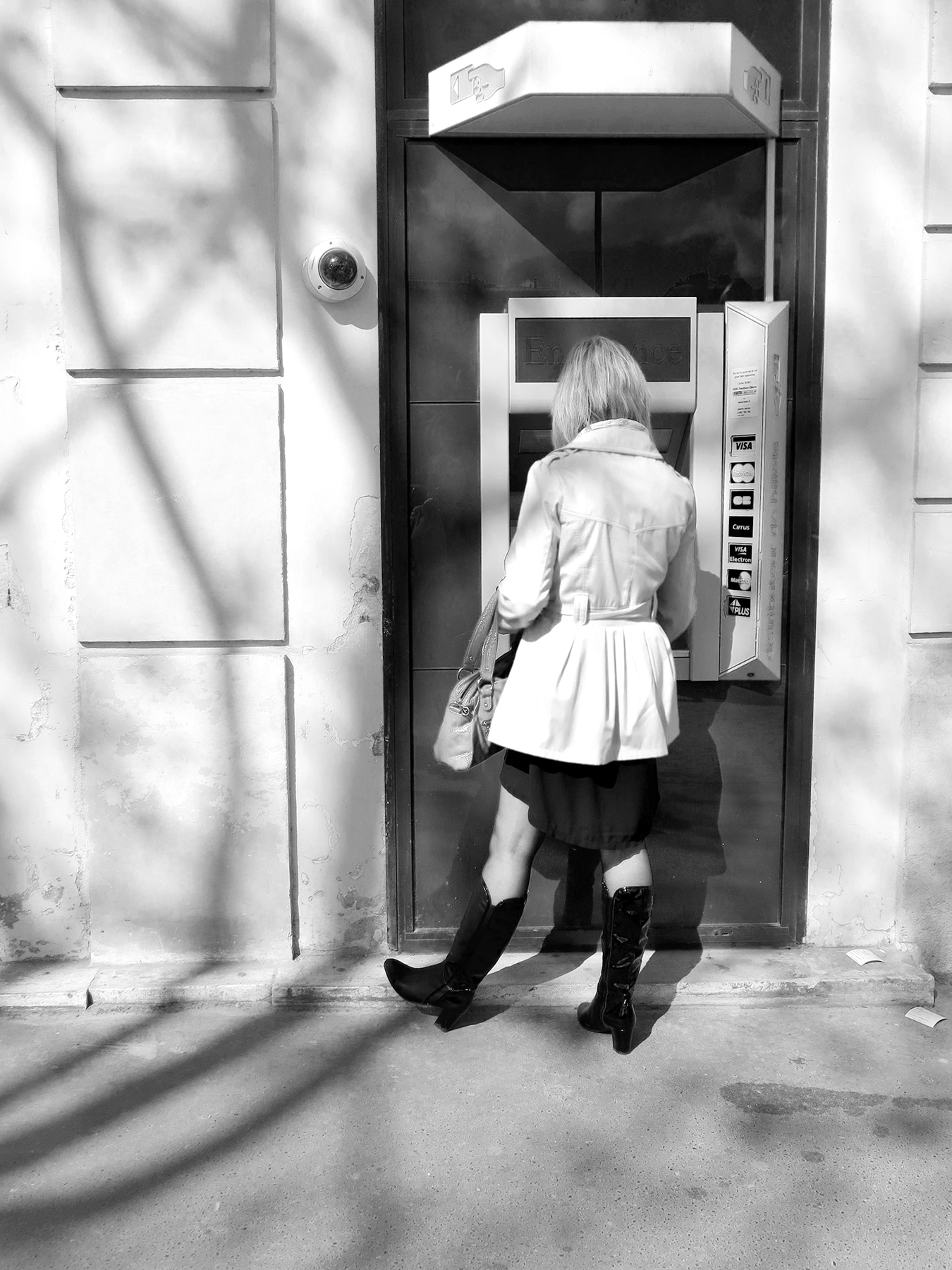So it goes. You learn some interesting things from a book you received for Hanukkah, and then you get caught up in much more fascinating questions about the book’s author. Let me report on both, today and tomorrow, respectively.

The book, Photography and Society, by German-French photographer Gisèle Freund, is a seminal study of the relationship between photography and society, including its political implications.
Freund had to flee Germany in 1933 where she was involved in political resistance against the rise of the Nazis. Finding shelter in Paris, she studied at the Sorbonne and began to photograph an ever widening circle of cultural icons and famous literary types, later published in Paris-Match, and Life Magazine, among others.


The book is an assessment of photography’s role up to the late 1970s, when the book was first written (published in translation in 1980). Freund could not have been more visionary in what was yet to come in the next half century than she was on those pages.
What could I, a photographer who is often thinking about politics, find more fascinating? I’ll get to that in tomorrow’s installment.


Here’s the Heuer’s Digest review:
Freund, using the dissertation she wrote at the Sorbonne in the 1930s, first lays out photography’s history, including how it was invented and how it displaced the many artists who had come to serve the demands of a growing and ever wealthier bourgeoisie for portraits: painters, engravers, lithographers. Originally hailed as an advancement to serve science, it soon dominated in the social realm as a token of status or a means of remembrance. The early phases of artistically creative photography were soon superseded by adjusting to the mediocre tastes of those who paid for the pictures. Eventually professional photographers, a trade that had grown like wildfire due to demand, were sent packing when do-it-yourself photography took over.



The second part of the book relegates the big question Is photography art?, to the dust bin where it belongs. Of course, it can be. Why not ask the much more relevant question instead, What is photography for?
For one, as a means of reproduction, it has been a wonderful tool to disseminate art (painting and sculpture included) – just think postcards in museum stores, or books that open the minds of generations to visual art otherwise confined to museums.



Secondly, there are many types of photography that impact society in other ways. There is “concern” photography, the documentation of suffering in poverty and war and general social justice issues, photography as personal artistic expression, photography as photojournalism, as a propaganda tool, and last but not least, its commercial aspects in the advertising industry. And, of course, always, always self-representation – although the term Selfie did not yet exist when she wrote.
Freund provides memorable examples of how the “objectivity” of photography is laughable, given how what you select can shape an impression, how captions under a given image can completely change its meaning, or how juxtaposition of two photographs can manipulate opinion. For example: take a photograph of a Russian tank sent to squash the Hungarian uprising. Consider caption 1 vs. caption 2:
1. In contempt of the people’s right to self determination, the Soviet government has sent armored divisions to Budapest to suppress the uprising.
2, The Hungarian people have asked the Soviets for help. Russian tanks have been sent to protect the workers and restore order.

Freund concludes her book with thoughts roughly summarized below: What began as a means of self representation has become a powerful tool that penetrates all aspects of society. Yet finding photographs that go beyond representation, some that are truly art, is rare. The tool has democratized mankind’s knowledge and built bridges between people by providing a common language in civilization, but has also “played a dangerous role as an instrument of manipulation used to create needs, to sell goods and to mold minds.”



How was Freund’s life and photography influenced by these insights? Stay tuned.


Photographs today are street photography from my 2014 visit to Paris, Freund’s chosen home.
Music is mainly interesting for the vintage film clips of Paris in the background.







Louise Palermo
Wow! You are hot today!!! This was a great article and I can’t wait for tomorrow. I know the power of your photography!! I enjoy it on my wall every day.
Sara Lee
I’m staying tuned….